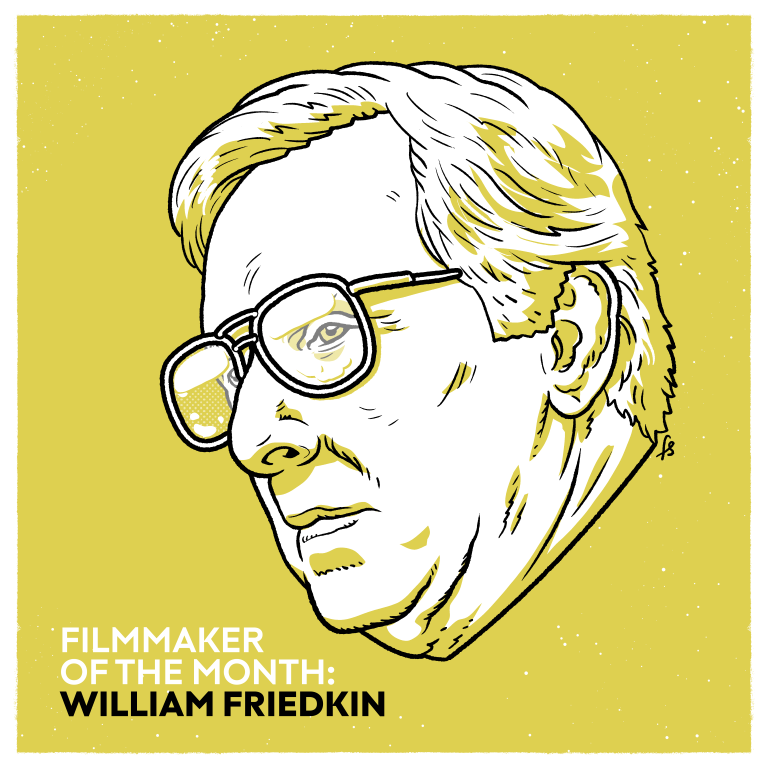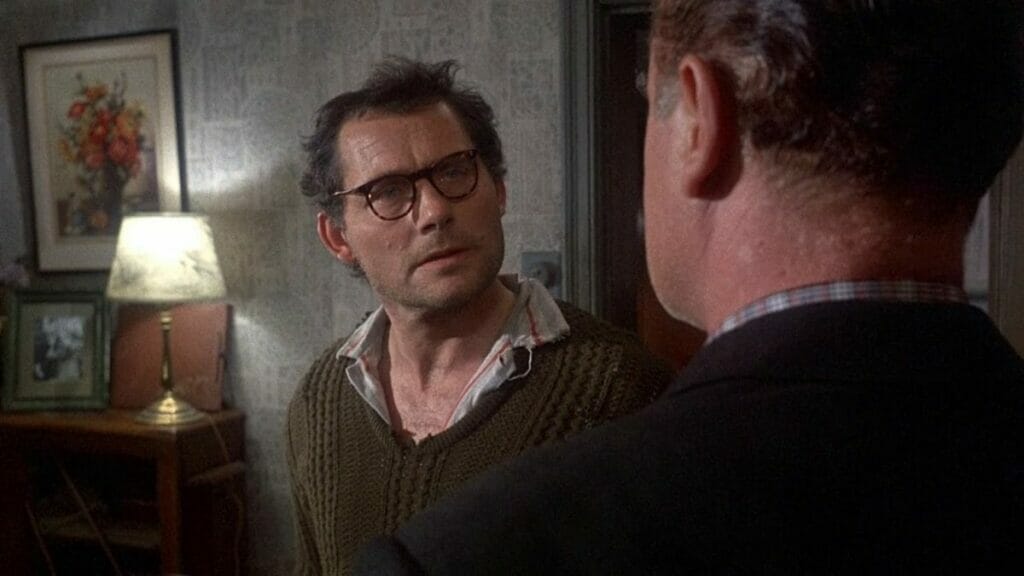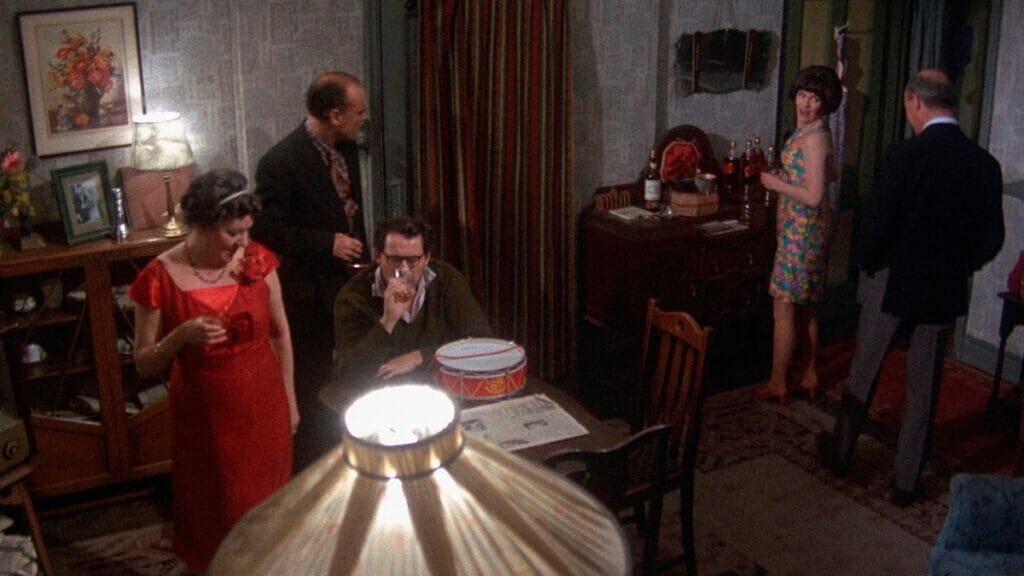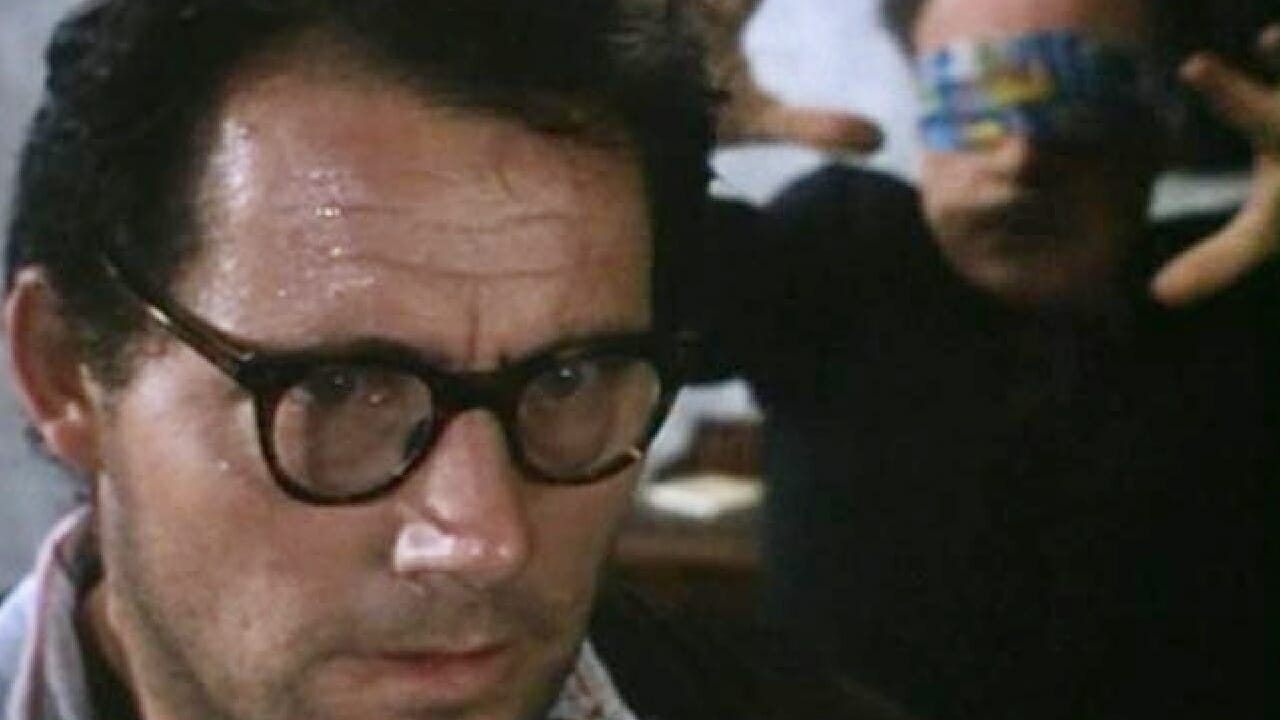Friedkin’s second film is a bruising affair that finds the fledgling director wielding style to produce maximum psychological damage.

Every month, The Spool chooses to highlight a filmmaker whose works have made a distinct mark on the cinematic landscape.
The funny thing about William Friedkin is that if you ask six people what their favorite Friedkin film is, you’ll get six different answers. These hot and cold responses marked Friedkin’s career overall, one that, for all its faults and stumbles, was never predictable or boring. He had no trademark and refused to be pinned down.
This piece was written during the 2023 SAG-AFTRA strike. Without the labor of the actors currently on strike, the works being covered here wouldn’t exist.
In the early days of his career, William Friedkin found himself playing second banana to his collaborators. For instance, one of his earliest biggest TV directing gigs was on Alfred Hitchcock Presents. Then, when he made the leap to feature narrative films, his debut was in service of Cher and Sonny Bono’s cult of personality.
In The Birthday Party, Friedkin’s second film, more well know talent once again eclipses him. Playwright Harold Pinter, whose original stage play the film adapts, also contributed the film script. Even now, the cover of Blu-rays and DVDs, the only way to see it currently, bills it as “Harold Pinter’s The Birthday Party.”
Nonetheless, the director refuses to sit in the backseat while someone else’s work and reputation carry the day. While Friedkin has never had a signature style, per se, he’s typically stylish. Birthday Party is no exception. Trapping his characters in a space that feels even smaller than the stage the play would’ve unfolded on, the filmmaker ratchets up the claustrophobia to near-unbearable levels and brings in several techniques that suggest a certain unreality within the small tale.

“Unbearable” proves to be 100% the watchword of Birthday Party. The premise, two strange men show up in a strange town, at a strange boarding house, and attempt to drive one of the residents to insanity, welcomes the audience into the equation. Yes, Goldberg (Sydney Tafler) and McCann (Patrick Magee) have arrived in this quiet seaside town to destroy Stanley (Robert Shaw), specifically. That doesn’t mean they’ll make any effort to shield the audience from the same abuses. By the end of the film, when Stanley, clean-shaven and in a suit, quietly exits the boarding house, the film, and possibly this plane of existence, as a viewer, you understand it. You may feel yourself a little tempted to welcome the same oblivion.
Friedkin, working with Cinematographer Denys Coop, cannily opens Birthday Party with a first-person POV of a car ride into the early morning of this sleepy beach community before cutting to an overhead shot of people strolling down a small strip of British beach. In addition to foreshadowing the arrival of something disturbing to the town—in retrospect, it is clear the car is carrying Goldberg and McCann—it sets the stage for the trap to come. By showing the outside world, Friedkin gooses the sense of the boarding house as a kind of inescapable pocket dimension.
Because we know that there’s a quiet but active hamlet just waiting to be escaped to, the film’s stubborn insistence on staying in one location becomes much more uncomfortable. It takes a limitation and turns it into an act of deliberate aggression. We turn from people watching a trapped man to imprisoned right alongside him.
[T]he filmmaker ratchets up the claustrophobia to near-unbearable levels and brings in several techniques that suggest a certain unreality within the small tale.
Once inside the boarding home, set dressing immediately alerts viewers to something off. The scene opens on a dirty, disheveled kitchen. However, it is not a mess in that bustling bed and breakfast after-the-meal shift kind of way. The dirt feels ground in. Neglect is at play here, and that’s not a recent development. The interactions between Meg (Dandy Nichols) and Petey (Moultrie Kelsall) aren’t unpleasant, but they feel odd. There’s a stiltedness, but not one born of estrangement. Despite what will come, the scene gives no sense that their marriage is failing or even in trouble. And yet, there’s something alien about the whole thing.
That sense of unease in Birthday Party only grows with Stanley’s arrival. At first impression, one expects the character to be young, perhaps a teen or twenty-something. After all, Meg has to wake him up and does so in a way that feels more like a mom than a hotel alarm call. When he finally comes to the table for breakfast, however, Shaw plays him even older than his real-life age. Stanley is very much a middle-aged mess of a man. Soon, he and Nichols’ interactions shift. In no time, they go from pseudo-mother and son to business owner and unpleasant customer and then varying degrees of queasy sexualized behaviors. Sometimes, it feels like Stanley is an aggressor, and others, Meg. Finally, there are even implications that the two have consummated an affair, one that at least one party is anxious to continue.
Then Goldberg and McCann arrive and things really go to hell.
This is also where Friedkin begins asserting himself more noticeably and provocatively. Minutes go by with nothing visible in the darkness. At other points, the scene goes to a black and white that resembles looking at a photo negative. A flashlight beam hits the camera and washes out the entire picture until the iris adjusts. Now, the characters and the audience aren’t just trapped. Friedkin’s camera has captured them in a strange alternate world that skews everything—social graces, time, identity.

Lulu (Helen Fraser), the final character, shows up as this turn in Birthday Party takes place. Her entrance immediately marks her as the obvious and unfortunate virgin sacrifice. First, she must enact a bizarre flirtatious relationship with the significantly older Goldberg, complete with lap sitting and occasional glimpses that suggest his hand is entirely up her dress. Then, worse, she becomes the victim of one character’s brutish mental collapse.
The group, sans Petey, who only returns too late to act as the film’s spineless moral center, engages in a game. While one participant dons a blindfold everyone scatters in the room. When the unseeing “it” calls time, everyone freezes in place. Then they wait for discovery as the blindfolded person stumbles around the room. The first found must then don the blindfold. Then, the process repeats. Once the it starts to search, no one else can move. Here, too, the effect is one of imprisonment. Even as they see their discovery coming, they can do nothing but stand stock still and welcome it. Only the blindfold provides them protection. Otherwise, they are entirely helpless.
All said The Birthday Party is a punishing bit of cinema to take in. It is well-written—of course—and assuredly well-made both despite and because of the restrictive setting. It is thus absolutely worth a watch. But don’t expect to enjoy it or be treated to a gift bag on your way out.

